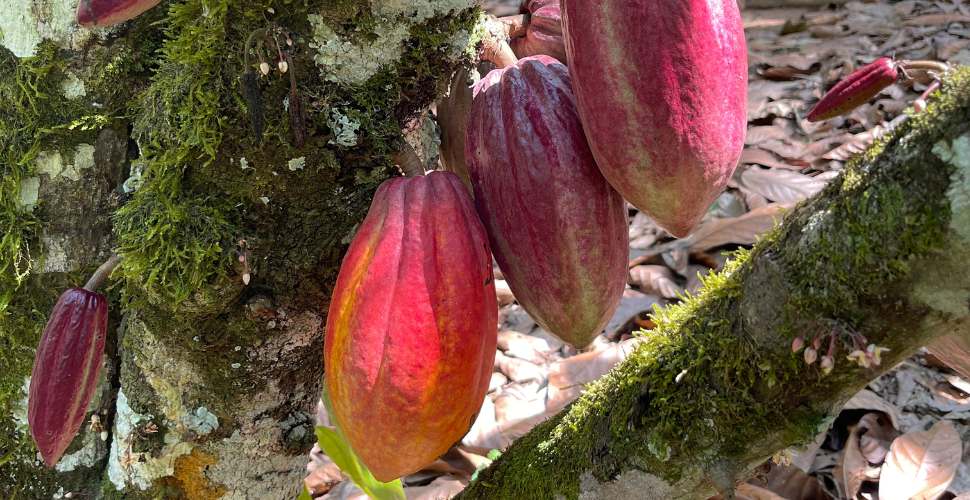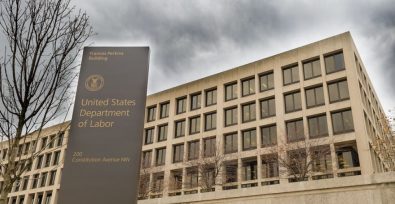Our community often asks us how to shop ethically.
Seeing a recognizable certification logo on a chocolate treat could put your mind at ease when shopping: cocoa certified by the most popular schemes—Fairtrade, Rainforest Alliance, or organic—is usually the preferred option for those of us mindful of the social and environmental impacts of the products we buy.
But do we know what these certification labels actually mean? Understanding the strengths and weaknesses of different schemes is key to being able to make conscious shopping decisions and encourage brands to go beyond the requirements of certification bodies to reduce harm in their supply chains.
After all, although certifications have the potential to significantly improve industry practices, in the words of Rainforest Alliance, there is a “growing recognition that certification alone is not enough”.
Click on the headings in the index to find out if and how the major cocoa certification schemes help companies to improve in these areas and what more companies can be doing to reduce social and environmental harm in their supply chains
Traceability
The importance of traceability in cocoa boils down to one simple fact: you cannot know the conditions in which the cocoa was harvested if you don’t know where it comes from. That means you can’t even begin to assess the likelihood that it was harvested by people in forced labor or that old-growth trees were chopped down to clear the land for the cocoa trees.
Most organic certification systems are particularly strong on traceability because they require organic cocoa to be physically separated from non-organic cocoa throughout the chain. Farm plots are mapped, making it possible to trace organic cocoa back to the farm it came from.
Fairtrade and Rainforest Alliance have both taken important steps to improve the traceability of certified cocoa. Both generate polygon maps of farms producing certified cocoa. Rainforest Alliance offers companies the possibility of buying identity-preserved cocoa, which means it can be traced back to a certificate holder, and Fairtrade offers physical traceability, which makes it possible to follow a specific product throughout the supply chain.
However, most companies choose to buy Fairtrade and Rainforest Alliance-certified cocoa under the system of “mass balance”. In practice, that means that when you buy a chocolate bar with a Fairtrade or Rainforest Alliance label on it, not all the cocoa in that bar is necessarily traceable. That’s because mass balance is a system that allows for certified and non-certified cocoa to mix during shipping and manufacturing. (You can find Rainforest Alliance’s definition of mass balance here and Fairtrade’s definition here.)
There are some ways in which offering mass balance to companies is beneficial. The cocoa supply chain is complex and beans are often mixed at different steps. Mass balance is a cheaper option for companies, and so is an easier entry point for companies beginning their journey. More companies buying certified cocoa means that, at least in theory, more farmers benefit financially from selling certified cocoa.
However, mass balance will not solve the sector’s systemic problems because of how it enables companies to continue using untraceable cocoa. Chocolate companies and other actors, like traders, processors, and grinders, should commit to 100% traceability.
Transparency
Transparency is a prerequisite for accountability. How can we hold companies to high standards if we don’t know how or from where they are sourcing cocoa?
Most credible third-party schemes that certify cocoa have a public database with key details about certificate holders. However, they could further build on transparency by disclosing more information, like the premiums received by cooperatives and farmers.
For companies to prove their commitment to transparency, they should also be working on making more information about their supply chains public. Each company sourcing cocoa should be at least working towards disclosing the cooperatives and farmer groups they source from (and the volumes sourced from each), as well as the percentage of the cocoa they source that is certified and the percentage that is sourced directly versus indirectly.
They should also be reporting on the risks identified in their supply chains and how they are addressing these risks. As a concrete example, companies should be sharing how many children are exposed to child labor in their supply chains and how many children are receiving remediation support. Nobody is expecting these figures to be at zero right now—that wouldn’t be practical in a sector where the practice is so widespread—but being upfront about the situation and the companies’ response can push the whole industry forward.
Find more information on the importance of transparency and accountability here.
Living income
Farmer poverty is the driver of many of the systemic issues in the cocoa sector, including child labor and deforestation. Until most cocoa farmers are earning at least a living income,[1] we will be unable to fully tackle the consequences of exploitative poverty. For that reason, for a company to show real commitment to farmer welfare, it would need to prove most farmers in their cocoa supply chain are earning a living income.
Certification schemes are doing important work to improve farmers’ incomes:
• As part of its 2020 program, Rainforest Alliance introduced a mandatory Sustainability Differential [2] or a cash figure per metric ton paid directly to the farmer in recognition of their efforts to farm more sustainably. As of July 2022, the minimum Sustainability Differential was set at $70 per metric ton. The scheme is also rolling out traceability tools to support transparency throughout the supply chain on the amount the individual farmer receives. Furthermore, Rainforest Alliance also requires Sustainability Investments, which are payments to farmer groups to promote the sharing of the costs of achieving certification among all actors who benefit from certification.
• Fairtrade has a mandatory minimum price for cocoa products as well as a Fairtrade premium. In 2019, the minimum price was raised from $2,000 to $2,400 per ton FOB (meaning at the border of the exporting country). [3] The Fairtrade premium also increased in 2019—from $200 to $240 per ton. Since 2019 Fairtrade has set voluntary Living Income Reference Prices at farmgate. In October 2022, Fairtrade applied an inflation correction to its Living Income Reference Prices, reaching $2,120 per ton for Ghana and $2,390 per ton for Côte d’Ivoire. Fairtrade also implements several living income projects with cooperatives and their commercial partners.
• Farmers who produce organic cocoa receive a higher price for their cocoa, but the market for organic cocoa is limited and there is no minimum price mechanism for organic-certified cocoa. Nevertheless, cocoa can be double certified as organic and Fairtrade or Rainforest Alliance with positive impacts on farmers’ income. For example, for organic Fairtrade cocoa, the price is $300 per ton over the Fairtrade Minimum Price or the market price, whichever is higher at the time, and in addition to the Fairtrade Premium of $240 per ton.
So, do most farmers producing certified cocoa earn a living income? The short answer is no. None of the main certification schemes can guarantee that most farmers under their programs earn a living income. For this reason, companies must go further if they are serious about tackling poverty and its consequences. Every company should develop a time-bound living income plan that includes addressing farm gate pricing.
Learn more about living income in cocoa here.
Child & forced labor
Around 1.56 million children are estimated to be in child labor in Ghana and Côte d’Ivoire, and 1.48 million of them are exposed to at least one component of hazardous child labor in cocoa production. Forced labor also occurs: around 29,300 adults and children in Côte d’Ivoire and Ghana are estimated to have been in forced labor in cocoa between 2013 and 2017.
Given the systemic nature of child labor in cocoa-producing communities, companies must ensure all the cocoa they source is covered by a comprehensive child labor monitoring and remediation system (or equivalent).
Some companies rely on certification schemes to reduce the risk of child and forced labor in their supply chain although the responsibility for human rights due diligence still rests ultimately with the companies themselves. So, what do certification schemes do to address these issues?
• Organic certification does not include any child or forced labor monitoring or remediation, so companies that buy cocoa from West Africa which is certified as only organic must have their own systems in place to ensure they are not benefiting from child or forced labor.
• Rainforest Alliance has an “assess-and-address” system requirement in its certification program. This requires farm certificate holders to have a farm-level human rights due diligence system in place which includes assessing risks every three years and mitigating them on an ongoing basis. A remedy must be provided when cases are identified, and Rainforest Alliance can suspend or withdraw certificates depending on the severity of the case. On small farms under group certificates, management is responsible for monitoring the risks and remediating cases, potentially raising the risk of conflicts of interest. Third-party auditors are responsible for assessing the existence and effectiveness of the system.
• Fairtrade encourages the use of mitigation and elimination plans in small producer organizations in high-risk regions and requires the organization to implement specific policies to prevent child and forced labor when it is identified as a risk. Since 2012, Fairtrade has been supporting producer communities to establish youth-inclusive, community-based monitoring and remediation (YICBMR) systems on child labor, in partnership with child rights NGOs. The area-based approach is useful for ensuring that child workers do not simply move to another location or sector and that community leaders, schools, and other relevant entities are involved. The youth-inclusive community approach helps empower those affected to engage other young people, identify solutions, and improve child welfare. However, a drawback to these systems is that they are more expensive and time-consuming to set up, including for producer organizations, as they go beyond just farming households. Fairtrade’s new cocoa standard mandates that Ivorian and Ghanaian cooperatives have a monitoring and remediation system for child labor and forced labor (effective 1st January 2024). Traders are mandated by the standard to support the cooperatives who have identified they are operating in areas of high risk of child labor and/or forced labor (effective July 2023).
Overall, Fairtrade and Rainforest Alliance’s systems help create structures and capacity for the monitoring and remediation of forced and child labor cases in cocoa-producing communities. However, there is very little data on the impact of these efforts.
Furthermore, until farmers are earning a living income, children and adults will continue to be exposed to labor abuses. As no certification scheme currently guarantees a living income, companies that want to support children and adults in cocoa-producing communities must also address their purchasing practices, including the price they pay for cocoa.
Deforestation & climate
In the last 60 years, Côte d’Ivoire and Ghana have lost well over 94% and 80% of their forests respectively, with around one-third of the loss linked to cocoa production. The remaining forests provide habitat to endangered species and contain vast stores of carbon, which would accelerate climate change if released.
In the last few years, certification schemes have increased requirements aimed at preventing deforestation.
• Rainforest Alliance’s 2020 program requires all certified farms to be GPS mapped. Groups must provide geolocation data for the largest farm unit of 100% of the farms and GPS polygon maps for at least 10% of the farms in the first year of certification. Rainforest Alliance cross-references these maps with customized risk maps to help flag areas of cocoa-producing regions where deforestation is likely.
• Although not yet being implemented, in Fairtrade’s 2022 Cocoa Standard update, the scheme expanded its requirements on deforestation. In addition to prevention and mitigation plan requirements, farm geolocation mapping is required in the updated Standard, and prevention and mitigation data must now be collected and reported to Fairtrade. Producer organizations must now also develop measures to raise awareness among their members and implement practices with a positive environmental impact. Traders are mandated to support cooperatives they source from with their plan to prevent and mitigate deforestation and degradation of the forest.
• While organic certifications recommend managing trees and woodland to enhance the local environment and wider landscape, there are no policies in place to monitor and curb deforestation.
One weakness in the current approach is the lack of remediation. In other words, if a farm has engaged in deforestation, they are removed from the schemes rather than given opportunities to remediate the harm or supported to find an alternative livelihood. As a result, farmers will likely continue farming in deforested areas causing further harm.
However, certification bodies face limitations from laws in consuming countries when it comes to remediation. The E.U.’s new regulation on deforestation-free products does not currently cover remediation, meaning that cocoa from farms where deforestation has occurred would not be allowed to be imported to the E.U. regardless of whether the certification schemes include remediation. This is a constraint because the E.U. is a major market for certified chocolate.
Companies can also go further in their efforts to stop deforestation by connecting monitoring systems to actionable alert systems which trigger field investigations.
The industry must also be addressing its contribution to global greenhouse gas (GHG) emissions. According to the Science Based Targets initiative (SBTi), the industry should cut its GHG emissions by at least half. Selling certified cocoa products does not necessarily mean a company is taking steps to cut its emissions. Ideally, companies should have time-bound action plans in place to reach net-zero carbon emissions.
Agroforestry
Robust agroforestry systems are a win-win for people and the planet, proving beneficial for carbon sequestration, biodiversity, and soil health, as well as farmers’ food security and income stability.
In recent years, agroforestry systems have been gaining popularity in the cocoa sector, but there is still more to be done to ensure a widespread transition from monocropping to diverse agroforestry.
• Rainforest Alliance is currently the only certification scheme with agroforestry requirements. The standard requires management to monitor and report annually on natural vegetation cover. Given that cocoa is a shade-tolerant crop, if less than 15% of the total area is under natural vegetation cover, management must develop targets and an action plan to reach this threshold within six years. Rainforest Alliance recommends farms with shade-tolerant crops work towards agroforestry systems with optimal species diversity and shade coverage, but this is not mandatory.
• Fairtrade and organic standards do not include formal agroforestry requirements. Together with partners, Fairtrade does support some cocoa farmers in pilot agroforestry programs, such as the Sankofa program in Ghana, but its reach is limited: the objective is to have 400 producers farming at least 1 hectare of land with dynamic agroforestry systems by 2025, with another 1,000 farmers started implementing agroforestry and at least 2,500 more farmers using diversified food systems.
To excel in this area, companies could set timebound targets for sourcing 100% of their cocoa in an agroforestry setting.
Agrichemical management
The use of chemicals is causing harm to people and the environment in cocoa-producing communities, including by contaminating rivers used for drinking and bathing and degrading soil health. Children and pregnant women are particularly susceptible to harm from pesticide exposure.
By shifting to 100% organic cocoa, companies can significantly reduce their contribution to these negative outcomes. They can also go further by investing in training and support for more farmers to transition to organic methods.
While organics certifications are the most focused on agrichemicals, Fairtrade and Rainforest Alliance also contribute to the reduction of pesticide use and safer handling, storage, and disposal.
Both prohibit the most hazardous materials and encourage the use of non-chemical methods of pest prevention and control. A series of safety and occupational health measures are also required to minimize the negative impact when pesticides are used.
Key takeaways
While all three certification schemes share a common goal of making agriculture more ‘sustainable’, each of them has its own focus and none of them is a silver bullet.
Sourcing 100% certified cocoa is a great way for companies to get support to improve, but the road does not end there. Companies that are committed to seriously addressing adverse impacts on cocoa-producing communities, including creating conditions for modern slavery to thrive, must go above and beyond certification requirements.
Ultimately, cocoa-producing communities would benefit from major companies working together pre-competitively to address issues at a regional level. Currently, companies are reluctant to collaborate on initiatives which leads to inefficiencies like duplication of effort in some areas and other areas being left out completely. To truly transform the sector, companies must be willing to go even beyond their supply chains.
Certification schemes could also expand their positive impact, including by increasing their focus on the practices of multinational chocolate companies. As the 2022 Cocoa Barometer explains:
For chocolate companies to be able to sell a product as certified requires very little fundamental change in the way they operate. Certification has done very little to close the power gap between multinationals and farmers. If a farmer is required to change most of his/her business practices to be able to sell their product, why shouldn’t the same be asked from large multinational corporations?
And of course, governments in producing and consuming countries must also play their part, by developing laws that hold companies accountable for identifying and tackling adverse impacts in their supply chains.
As consumers, it’s easy to feel helpless, especially when learning that certification alone cannot address all the serious environmental and social harms in the cocoa sector. While it’s true that chocolate companies and other industry actors should take responsibility for addressing the systemic issues in the sector, you still have a role to play.
Companies rely on consumers to stay in business, so they care what we think. You can use your unique power as a consumer to push companies to continue their sustainability journey. Check out your favorite chocolate brands’ ranking on the 2023 Chocolate Scorecard (launching end of March!) and reach out to them to congratulate them on areas they’re doing well on and ask them to improve on the areas they’re lagging on. Years of successful campaigning in the cocoa sector is proof that this works! Together, we can contribute to change for people and planet, and an end to modern slavery.
[1] According to a 2020 paper by the VOICE Network, the minimum farm gate price necessary to earn a living income from cocoa should be at least $3,166 per metric ton for Côte d’Ivoire, and $3,116 per metric ton for Ghana.
[2] The use of the word “sustainability” in this context does not mean the certification scheme ensures the cocoa purchased is sustainable – it is simply the name of the contribution.
[3] To give an example of what this means in practice, in Cote d’Ivoire, where 70% of Fairtrade sales come from, the Fairtrade Minimum Price differential during the October 2022 – March 2023 season is $311.40 per ton. Ivorian cooperatives must pass the full value to their farmer members.





I have supported fairtrade and run a fairtrade shop in our church,I always bought through tradecraft ,my question is should we be trying to rescue tradecraft as they with transform trade worked with farmers all over the world to make sure they receive a living wage and then sold products to the public ,also should we only support companies like Divine that are run by the woman in the community